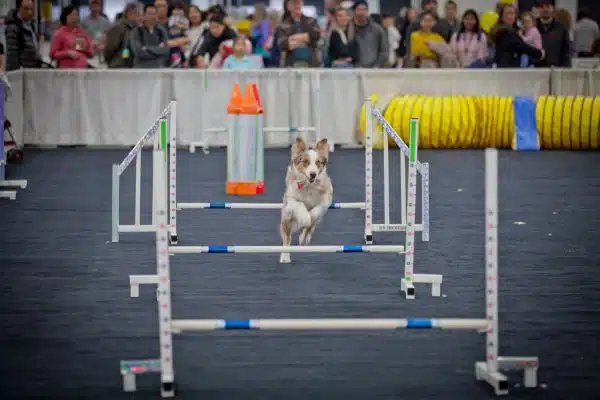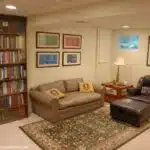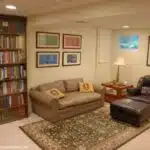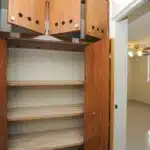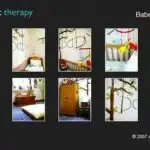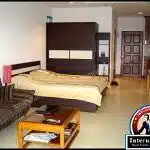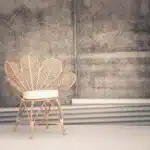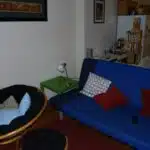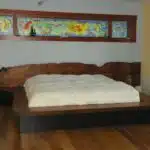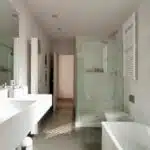Pet lovers have a unique perspective when it comes to designing their homes. They understand the importance of creating spaces that are not only aesthetically pleasing but also functional for their furry friends. From choosing pet-friendly materials to incorporating designated play areas, pet owners prioritize the needs of their pets in their home design.
In this article, we will explore how pet lovers design their homes differently. We will discuss how they incorporate elements such as pet beds, feeding stations, and litter boxes seamlessly into their home decor. Additionally, we will delve into the benefits of designing a home with pets in mind and how it can improve the overall well-being of both pets and humans alike. Whether you are a seasoned pet owner or considering adding a furry friend to your household, this article will provide valuable insights on how to create a home that is both stylish and practical for your beloved pets.
Prioritizing Pet-Friendly Materials
Pet lovers who are designing their homes have a unique challenge in creating a space that is both functional and comfortable for their furry friends. One important consideration when designing pet-friendly homes is the use of eco-friendly and sustainable materials. This not only benefits the environment but also ensures the health and safety of pets.
Fortunately, there are now many eco-friendly pet products available on the market. For example, there are pet beds made from recycled plastic bottles or organic cotton. These products not only reduce waste but also limit exposure to harmful chemicals found in traditional pet products. Additionally, using natural fibers such as wool or bamboo for rugs and furniture can also benefit pets by reducing allergens and improving air quality.
Sustainable pet design goes beyond just choosing eco-friendly materials. It also involves thoughtful planning to ensure that pets have access to designated play areas while keeping them safe from hazards such as toxic plants or sharp edges. In the next section, we will discuss how incorporating designated play areas into home design can help create a harmonious living environment for both pets and their owners.
Incorporating Designated Play Areas
- Designated play areas for pets are an important aspect of pet-friendly home design.
- Toy storage solutions can help keep the designated play area organized and clutter-free.
- Pet-proofing furniture can help protect both the furniture and the pet from potential damage.
- Comfortable pet beds not only provide a place for your pet to rest, but also encourage pets to use the designated play area rather than the furniture.
- Incorporating pet-proof materials into the designated play area can help protect both the pet and the home.
- Assessing the needs of your pet is key to creating an effective, designated play area for them.
Toy Storage Solutions
As pet lovers, we understand how much joy our furry friends bring to our lives. However, with that joy comes the mess and clutter of their toys scattered around the house. Innovative toy storage solutions can make all the difference in keeping your home tidy while still allowing your pets to enjoy their playtime.
DIY toy organizers are a popular choice for pet owners who want to incorporate designated play areas into their homes. These solutions not only keep your pet’s toys organized but can also add a personal touch to your interior design. With simple materials such as cardboard boxes or PVC pipes, you can create unique and functional storage options tailored to your pet’s specific needs.
When designing designated play areas, it’s essential to consider the safety and accessibility of toy storage solutions. It’s important to choose materials that are durable and non-toxic for your pets’ well-being. Additionally, placing toy organizers in easily accessible locations will encourage your pets to engage in independent play and help them learn good habits of putting their toys away when playtime is over. With innovative toy storage solutions and thoughtful design choices, you can create a beautiful and functional space for both you and your beloved pets.
Pet-Proofing Furniture
As pet owners, we all want our furry friends to have designated play areas where they can safely and freely enjoy their toys. However, having a cluttered and messy space filled with scattered toys is not ideal for anyone. That’s why incorporating toy organizers into your home design is a great option for keeping your pet’s play area neat and tidy. But organizing your pet’s toys is not the only challenge that comes with creating a dedicated play area. Pet-proofing furniture is equally essential in ensuring your pets’ safety and preventing any damage to your home.
Pet proofing hacks are an excellent way to keep your furniture safe from scratches, bites, and accidents that may occur during playtime. Investing in durable materials such as leather or microfiber couches will prevent hair build-up while making cleaning much more manageable. Stylish pet gates are also great options for keeping pets away from certain areas of the house or blocking off access to valuable items in the room.
When designing designated play areas, it’s important to consider both functionality and aesthetics while ensuring safety for both pets and humans alike. Incorporating stylish pet gates can add a touch of design flair while serving as functional barriers to specific areas of the house. In addition, taking preventive measures such as covering sofas with slipcovers or blankets can help minimize damage caused by pets’ claws or bites, prolonging the lifespan of furniture pieces in the long run. By incorporating these pet-proofing hacks seamlessly into your design plan, you can create a beautiful space for both you and your pets without sacrificing style or function.
Comfortable Pet Beds
As pet owners, we always want the best for our furry friends. We create designated play areas to ensure they have a safe and fun space to enjoy their toys. However, another important aspect of creating a comfortable environment for our pets is providing them with cozy and comfortable beds. Pet bed trends are constantly evolving, and there are many options available in the market that cater to different pet needs, sizes, and preferences.
One trend that has gained popularity among pet owners is DIY pet bed ideas. These ideas offer a cost-effective way to create personalized and unique beds for your pets while also being environmentally friendly. Using recycled materials such as old blankets or pillows can be repurposed into comfortable bedding options for your pets. Additionally, incorporating design elements such as elevated beds or enclosed spaces can provide a sense of security and comfort for pets.
Comfortable pet beds not only provide physical comfort but also contribute to the overall well-being of our pets. A good night’s sleep is essential for both humans and animals alike, especially considering that pets spend most of their day sleeping. When choosing a bed, it’s important to consider factors such as size, material, and durability. By prioritizing these factors along with incorporating innovative DIY ideas into your design plan, you can create a cozy space that your furry friend will love spending time in.
Incorporating designated play areas into our homes is an excellent way to provide a safe space for our pets’ playtime activities. However, ensuring optimal comfort through cozy pet beds is just as important in promoting their well-being. By staying up-to-date on current pet bed trends and exploring creative DIY ideas, you can cater to your furry friend’s unique needs while also adding aesthetic appeal to your home decor plan.
Choosing The Right Flooring
After creating a designated play area for your furry friend, the next step in pet-friendly home design is choosing the right flooring. This decision can be difficult, as there are pros and cons to both carpet and hardwood flooring options.
Carpeting can provide a comfortable and cozy atmosphere for pets to lounge on, but it also comes with some downsides. Pet hair and stains can easily get trapped in the fibers, making it difficult to clean. Additionally, if your pet has any accidents on the carpet, it may require professional cleaning or even replacement. Hardwood floors offer a more durable option that is easier to clean, but may not be as comfortable for pets to lay on.
When deciding between DIY or professional installation of your flooring, consider your skill level and budget. DIY projects can be cost-effective but may lead to mistakes that could ultimately cost more money in repairs. Professional installation ensures proper installation and guarantees quality workmanship but may come with a higher price tag.
Overall, when designing a pet-friendly home, it is important to weigh the pros and cons of each flooring option and decide what suits your lifestyle best. Whether you choose carpet or hardwood floors, always make sure they are properly installed to ensure safety for both you and your furry friend.
Transition: Now that you have chosen the right type of flooring for your pet’s play area, the next step is creating a cozy sleeping area where they can rest after a long day of playtime.
Creating A Cozy Sleeping Area
When it comes to designing a home for pets, creating a cozy sleeping area is essential. Cozy bedding and stylish decor can make your pet feel comfortable and at ease, which is especially important if they spend a lot of time sleeping. Luckily, there are plenty of DIY sleeping nooks and budget-friendly options that can help you create the perfect space for your furry friend.
One way to create a cozy sleeping area is to invest in high-quality bedding. Look for soft materials that will provide warmth and comfort, such as fleece or Sherpa. You may also want to consider adding a heated pad to keep your pet warm during colder months. Additionally, incorporating stylish decor elements, such as decorative pillows or wall art, can add some personality to the space.
For those on a budget, DIY sleeping nooks can be a great option. Consider repurposing an old piece of furniture, such as an end table or dresser drawer, into a cozy bed for your pet. You could also construct a simple platform bed using wooden pallets or other inexpensive materials. Don’t be afraid to get creative – the possibilities are endless!
As we all know, pets love their sleep just as much as we do! By creating a comfortable and inviting sleeping area for your furry companion, you’re not only enhancing their quality of life but also strengthening the bond between you both. In the next section, we’ll discuss how designing feeding stations can further improve your pet’s living space.
Designing Feeding Stations
A cozy sleeping area is crucial for pets to feel safe and secure in their homes. But what about feeding stations? Pet lovers must also consider the design and functionality of these areas to create a harmonious living space for both themselves and their furry friends.
DIY feeding stations have become increasingly popular among pet lovers who want to save money while still providing a stylish and functional space for their pets. These stations can be made from a variety of materials, such as wood or PVC pipes, and can be customized to fit the specific needs of each pet. Additionally, minimalist feeding solutions are becoming more prevalent as well, with pet owners opting for simple bowls placed on elevated stands or wall-mounted options.
When designing feeding stations, it’s important to consider the layout of the home and how the station will fit seamlessly into the overall design. The feeding area should be easily accessible but not obstructive, allowing pets to eat without feeling cramped or uncomfortable. With some creativity and attention to detail, pet lovers can create beautiful and functional feeding stations that integrate seamlessly into their homes.
As pet lovers continue to prioritize their pets’ comfort and happiness in their homes, integrating litter boxes is another essential consideration. Not only do litter boxes need to be functional and easy-to-clean, but they should also blend seamlessly into the overall design aesthetic of the home. By taking time to carefully consider all aspects of pet care within the home environment, pet lovers can create a cohesive living space that caters both to their own needs and those of their beloved pets.
Integrating Litter Boxes
Designing a home with pets in mind can be challenging, especially when it comes to litter boxes. However, with a little creativity and some DIY skills, pet lovers can integrate litter boxes seamlessly into their home decor. There are many clever solutions to this issue that can help keep litter boxes out of sight and odor-free.
One popular option is hidden litter box furniture. These pieces of furniture look like regular cabinets or side tables but have a discreet opening for cats to enter and exit the litter box. Some even have built-in ventilation systems to reduce odors. Additionally, these furniture pieces can be customized or DIYed to fit any style or space requirements.
For those who prefer to use traditional litter boxes, there are also many DIY solutions available. From repurposing storage containers as litter boxes to creating custom-built enclosures for existing ones, the possibilities are endless. With some basic tools and materials, pet lovers can create functional and attractive litter box solutions for their furry friends.
Ensuring adequate storage for pet supplies is essential when designing a pet-friendly home. Next up, we will explore various storage options that can help keep everything from food to toys organized and easily accessible.
Ensuring Adequate Storage For Pet Supplies
When it comes to designing a pet-friendly home, ensuring adequate storage for pet supplies is crucial. Pet owners can quickly find themselves overwhelmed with bags of food, toys, and grooming tools cluttering their homes. To combat this issue, there are many DIY storage solutions that can help keep everything organized and easily accessible.
One popular option is incorporating hidden storage options throughout the home. For example, built-in cabinets or cubbies under staircases can provide a discreet space for storing pet supplies while keeping them out of sight from guests. Additionally, repurposing furniture such as an old trunk or dresser can create unique and functional storage solutions.
Another way to maximize storage in a pet-friendly home is to think vertically. Adding shelves or hanging baskets on walls can free up valuable floor space while still providing ample room for storing pet supplies. Choosing furniture pieces that serve dual purposes such as an ottoman with built-in storage or a coffee table with drawers can also help save space.
In summary, creating adequate and efficient storage solutions for pet supplies is essential when designing a pet-friendly home. By incorporating hidden storage options, thinking vertically, and repurposing furniture, pet owners can optimize their living spaces while keeping everything they need to care for their pets close at hand. The next step in designing a pet-friendly home is optimizing space for exercise and play.
Optimizing Space For Exercise And Play
Pet lovers understand that their furry friends require ample space for exercise and playtime. As a pet lifestyle expert, I recommend optimizing your home’s layout to accommodate your pets’ needs while still maintaining an aesthetically pleasing environment. Pet exercise not only promotes physical fitness but also enhances mental stimulation, which is essential for their overall well-being.
To create a space conducive to pet exercise and play, consider incorporating playtime decor such as scratching posts, climbing towers, and interactive toys. These items not only provide entertainment for your pets but also promote natural behaviors such as scratching and climbing. Additionally, pet-friendly interiors can be achieved by using durable flooring materials that are easy to clean and resistant to scratches.
Space optimization is crucial when designing pet-friendly interiors. Consider creating designated areas for your pets where they can move around freely without disrupting other areas of the house. By providing ample space for movement and play, you can ensure that your pets remain happy and healthy. Investing in furniture that can double as storage or serve dual purposes is also an excellent way to maximize space while still providing all the necessary amenities for your furry friends.
Incorporating pet-friendly furniture is another way to optimize space while ensuring comfort for both you and your pets. From cozy beds to stylish cat trees, there are a plethora of options available on the market today. Choosing furniture pieces that complement your interior design while also serving practical functions ensures that both you and your pets are happy with the final product. With these tips in mind, you can create a harmonious living space that caters to both you and your beloved furry companions.
Incorporating Pet-Friendly Furniture
- When selecting pet-friendly furniture, the fabric is an important factor to consider. Natural fibers, like cotton and linen, are most durable and easily cleaned.
- Synthetic fabrics, such as polyester and velvet, may not be as durable and can attract pet hair.
- Cleaning pet-friendly furniture can be done with a vacuum cleaner and a mild upholstery cleaner for deeper cleaning.
- For leather furniture, it is important to condition the leather regularly to protect it from pet scratches and moisture damage.
Choosing Pet-Friendly Fabrics
When it comes to designing a home that is pet-friendly, one crucial consideration is the type of fabrics used. Pet lovers know how quickly their furry friends can make a mess, which makes choosing the right materials essential. Opting for durable fabrics that are easy to clean and resistant to scratches is key. Pet-friendly color schemes such as earthy tones or shades of green and blue can also help conceal any stains or fur that may accumulate on furniture.
Another aspect of incorporating pet-friendly furniture is considering DIY pet toy ideas. Not only does this provide entertainment for pets, but it also ensures they have designated areas to play with their toys, rather than destroying other items in the home. Using natural materials such as wool or cotton for DIY toys can be gentle on pets’ teeth and reduce the risk of ingestion if they chew them apart.
Overall, designing a home around pets requires careful planning and attention to detail. By selecting durable fabrics and incorporating DIY pet toy ideas, homeowners can create a space that is both stylish and functional for both themselves and their furry companions. It’s all about finding a balance between practicality and aesthetics while keeping pets’ safety in mind.
Cleaning Pet-Friendly Furniture
Incorporating pet-friendly furniture into a home requires not only selecting durable fabrics and DIY pet toy ideas but also considering cleaning techniques that will help maintain the longevity of the furniture. Eco friendly cleaning is an excellent way to keep the furniture clean without harming the environment or pets. This type of cleaning can be done using natural products such as vinegar, baking soda, and lemon juice. These products not only clean but also disinfect surfaces, making them safe for pets.
Another essential aspect of cleaning pet-friendly furniture is allergen reduction techniques. Pets can carry allergens that can cause allergic reactions in humans. Using a vacuum cleaner with a HEPA filter can help reduce these allergens by trapping them before they are released back into the air. Additionally, using hypoallergenic fabrics such as microfiber or leather can help reduce allergens from accumulating on furniture.
Finally, it’s important to note that regular maintenance is crucial in keeping pet-friendly furniture clean and long-lasting. Cleaning up spills immediately and regularly vacuuming or wiping down surfaces can prevent stains from setting in and prolong the life of the furniture. By incorporating eco-friendly cleaning methods and allergen reduction techniques into regular maintenance routines, homeowners can ensure that their pet-friendly furniture remains functional and stylish for years to come.
Maximizing Natural Light
Incorporating pet-friendly furniture is just one way that pet lovers design their homes differently. Another important element to consider is natural light. Not only does it create a warm and inviting atmosphere, but there are also many benefits of natural light for pets.
Research shows that natural light can improve your pet’s mood, energy levels, and overall health. It can help regulate their sleep-wake cycle and increase their vitamin D levels, which is crucial for bone growth and development. Additionally, natural light has been proven to reduce stress and anxiety in animals, making them feel more relaxed and comfortable in their surroundings.
When designing your home with pets in mind, it’s important to choose window treatments that will allow for plenty of natural light to enter the space. Avoid heavy drapery or dark curtains that block out sunlight altogether. Instead, opt for sheer fabrics or blinds that can be easily adjusted to let in as much or as little light as needed throughout the day.
Utilizing indoor plants for air purification is another great way to create a healthy and inviting environment for both you and your furry friends. By choosing plants that are safe for pets like spider plants or bamboo palms, you can not only improve the air quality in your home but also add a touch of nature to your decor. With these simple design choices, you can create a space that is both beautiful and functional for you and your beloved pets.
Utilizing Indoor Plants For Air Purification
Indoor plants are a great way to naturally purify your air while also adding life and beauty to a space. Many varieties of plants thrive indoors, ranging from low-maintenance succulents to more labor-intensive tropical varieties. Proper care of indoor plants is essential for their health and for the benefits of purifying your air, including providing the right amount of light, water, and fertilizer. With careful consideration of the type of plants you choose and their care requirements, you can create a pet-friendly home environment with the help of indoor plants.
Indoor Plant Types
As pet lovers, we all know the importance of keeping our furry friends healthy and happy. One way to achieve this is by utilizing indoor plants for air purification. Not only do indoor plants help clean the air, but they also provide numerous benefits for our pets, such as reducing stress and providing a calming environment.
When it comes to choosing indoor plant types, it’s essential to consider the safety of our pets. Some common houseplants can be toxic to animals if ingested or even just touched. However, many safe and pet-friendly options are available, including spider plants, Boston ferns, and bamboo palms. These plants not only purify the air but also add a touch of greenery to our homes.
To keep our indoor plants thriving while ensuring the safety of our pets, maintenance tips must be followed. It’s crucial to keep plants out of reach of curious pets who may try to nibble on them. Additionally, regular watering and proper lighting are necessary for plant health. By following these guidelines, we can create a healthy and harmonious home for both ourselves and our beloved pets.
Remember that incorporating indoor plants into your home can benefit both you and your pet’s well-being in many ways. With careful consideration for safe plant options and proper maintenance practices, you can enjoy cleaner air, a more relaxed atmosphere, and a beautiful living space for you and your furry family members.
Plant Care Requirements
Pet friendly plants can provide numerous benefits for both humans and their furry companions. Indoor plants not only purify the air, but they also create a calming environment that can reduce stress and anxiety in pets. However, it’s important to choose safe plant options and follow proper maintenance practices to ensure the health and well-being of our pets.
One crucial aspect of plant care is watering. Overwatering or underwatering can lead to root rot or dehydration, which can be harmful to both plants and animals. It’s essential to monitor soil moisture levels and adjust watering schedules accordingly. Additionally, proper lighting is necessary for healthy plant growth. Most pet-friendly plants require bright, indirect light, but it’s important to research specific plant care requirements for optimal growth.
Incorporating greenery for pets into our homes requires careful consideration for safe plant options and proper maintenance practices. By following these guidelines, we can enjoy cleaner air, a more relaxed atmosphere, and a beautiful living space for ourselves and our furry family members. With regular watering, proper lighting, and attention to the safety of our pets, we can create a harmonious home that promotes overall wellness for all who reside within it.
Managing Pet Hair And Odor
As pet lovers, we all know that managing pet hair and odor can be a daunting task. However, there are several cleaning tips and grooming recommendations that can help you keep your home smelling fresh and clean.
Firstly, invest in a good vacuum cleaner with a HEPA filter. This will not only help remove pet hair from carpets and furniture but also capture any allergens or dust particles in the air. Additionally, consider using washable covers for your furniture to prevent odors from seeping into the fabric.
Secondly, regular grooming is essential for keeping your pets smelling fresh. Bathing them once every two weeks with a mild shampoo can help eliminate any unpleasant odors. Also, make it a habit to brush your pets regularly as it helps remove loose fur and prevent matting.
Lastly, don’t forget to clean their bedding regularly. Wash their blankets and beds once a week to avoid any buildup of dirt or bacteria. You can also add baking soda to the wash cycle to neutralize any unpleasant odors.
By following these simple cleaning tips and grooming recommendations, you can maintain a fresh-smelling home even with furry friends around.
Now that we have discussed managing pet hair and odor indoors let’s move on to creating a safe outdoor space for our furry companions.
Creating A Safe Outdoor Space
Designing a safe outdoor space is crucial for pet lovers who want to provide their furry friends with an area to play and relax without worrying about potential hazards. Outdoor safety should be the top priority when creating a backyard fun environment that both pets and humans can enjoy. This includes pet proofing the area and implementing landscaping solutions that minimize risks.
Pet proofing your outdoor space means taking measures to prevent your pets from escaping or coming into contact with harmful substances. This can include installing sturdy fences, securing gates, and checking for gaps or holes in existing structures. In addition, it’s important to remove any toxic plants or chemicals that could harm your pets if ingested. By pet proofing your outdoor space, you can ensure that your pets are safe while enjoying their time outside.
Landscaping solutions are also key in creating a safe outdoor space for pets. This can include using soft materials such as mulch or grass instead of hard surfaces like concrete or asphalt. It’s also important to avoid planting sharp objects like thorny bushes or trees that could injure your pets while they’re playing. Creating designated play areas and paths for your pets can also help keep them away from potential risks.
By implementing these strategies, you’re not only improving the safety of your outdoor space but also contributing to the overall well-being of both pets and humans. A secure environment allows pets to engage in physical activity and socialization which is essential for their mental and physical health. As a pet lover, taking the time to create a safe outdoor space is a great way to show how much you care about your furry friend’s happiness and safety.
Improving Overall Well-Being For Pets And Humans
Creating a safe outdoor space for our furry friends is crucial, but what about the interior of our homes? Pet lovers understand that pets are not just animals, they are family members. Therefore, pet friendly decor has become a major trend in the design industry. From durable fabrics to scratch-resistant surfaces, pet owners are prioritizing functionality without sacrificing style.
Incorporating pet friendly decor is not only aesthetically pleasing but also offers health benefits for both pets and humans. For instance, choosing non-toxic materials ensures the safety of our furry friends who often lick or chew on surfaces. Additionally, incorporating plants into our decor not only adds natural beauty but also helps purify the air we breathe.
Finding balance between style and functionality can be challenging when designing a home with pets in mind. However, it is essential to remember that creating an environment that is comfortable and enjoyable for both pets and humans is key to improving overall well-being. By incorporating pet friendly decor and considering the health benefits of pet ownership, we can create a home that fosters love, happiness, and harmony.
Finding Balance Between Style And Functionality
Balancing aesthetics and practicality is a crucial aspect to consider when designing a home for pet lovers. There are ways to create a beautiful living space without sacrificing functionality. Investing in durable, easy-to-clean materials such as leather or microfiber sofas, hardwood floors, and washable rugs can help maintain the aesthetic appeal while also accommodating pets.
Finding the right pet-friendly decor is another key element in creating a harmonious home for both pets and owners. Consider incorporating elements that serve dual purposes such as decorative storage bins that also hold pet toys or stylish pet beds that complement the overall design of the room. Opting for furniture with rounded edges can be safer for pets, especially those who like to jump on and off couches.
Incorporating pet-themed accents can add a personal touch to any room. However, it’s important not to go overboard with these accents, as they can quickly become overwhelming. A few tasteful pieces such as wall art or throw pillows featuring your favorite breed can enhance the overall look of the space without detracting from its beauty.
Creating a cozy and functional space for both pets and owners is achievable by following these tips. By balancing aesthetics with practicality, finding the right pet-friendly decor, and incorporating tasteful pet-themed accents, you can achieve an inviting atmosphere that accommodates both furry friends and their human companions. Remember that designing a home should always prioritize comfort and livability over strict adherence to trends or styles.
Conclusion
Pet lovers are constantly looking for ways to enhance their furry friends’ lives while maintaining a stylish and functional home. By prioritizing pet-friendly materials, creating designated play areas, choosing the right flooring, designing cozy sleeping areas and feeding stations, managing pet hair and odor, and creating safe outdoor spaces, pet owners can improve their pets’ well-being. According to a recent survey by Houzz, 51% of homeowners with pets say they renovate their homes with their pets in mind.
People who love their pets know that they are more than just animals; they are family members. It’s no surprise that so many homeowners prioritize their pets’ needs when designing or renovating their homes. After all, our furry friends bring us so much joy and companionship each day. By creating an environment that is both comfortable for our pets and aesthetically pleasing for ourselves, we can achieve the perfect balance between style and functionality in our homes. Remember to always put your pet’s safety first and consider incorporating design elements that improve your pet’s overall well-being.
Image Credits
- “Pet Lover Show 2019” by GoToVan (featured)

